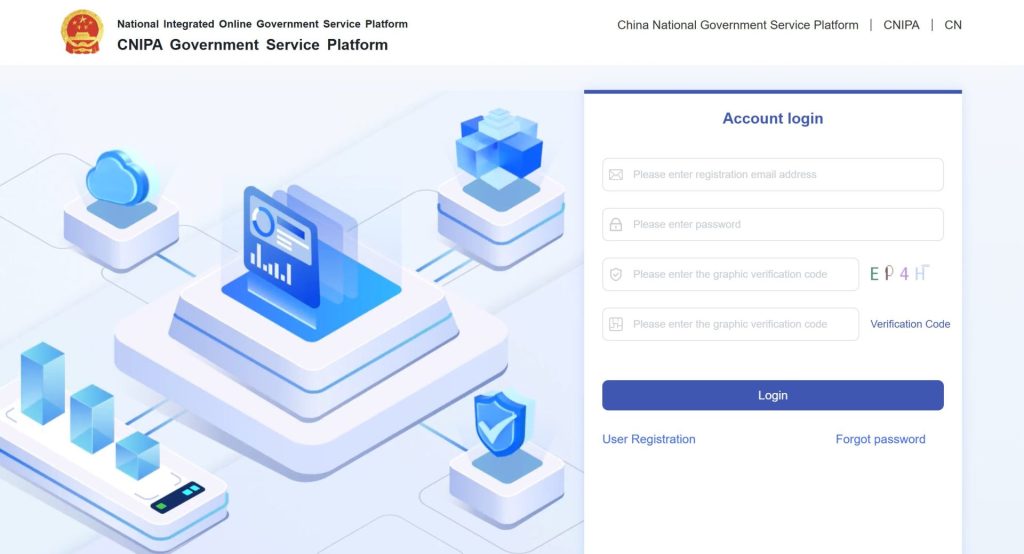Contents
Introduction:
On October 20, 2025, the China National Intellectual Property Administration (CNIPA) officially launched its new framework of China’s trademark system. Unlike previous technical updates, the essence of this change lies in its full integration with the National IP Public Service Platform’s Unified Identity Authentication System.
This reform signifies China’s transition from department-level digitalization to nationwide integration—a shift from “business management” to “digital governance” within its intellectual property framework.
China’s Trademark System: The Deeper Meaning of a Unified Identity System
The unified identity system connects previously separate accounts for trademarks, patents, and copyrights.
Individuals, enterprises, and agencies can now handle all IP matters with one national account.
This is not just a login upgrade but a structural reform in data security, rights management, and inter-departmental coordination.
All case records, payment logs, and electronic documents become traceable and verifiable under a single digital identity.
According to CNIPA’s official notice:
-
From October 20, the old system will only allow viewing and downloading of existing cases; all new submissions, payments, and responses must be completed in the new system.
-
PDF and JPG files created before July 1, 2024, remain accessible only through the previous platform.
-
Local trademark offices will send official documents directly to applicants’ registered email addresses.
-
Physical digital-certificate tokens will be discontinued and replaced by software-based certificates.
Together, these measures mark China’s move toward full electronic governance of its trademark system.
The New China’s Trademark System: From Informationization to Intelligent Governance
Earlier systems were built mainly for application and acceptance.
The new structure forms a closed-loop platform that covers examination, payment, notification, tracking, and archiving—a true national governance network.
Unified data enables regulators to detect malicious filings, analyze market behavior, and coordinate information with courts, customs, and market-supervision authorities in real time.
China’s Trademark System: The Soft Certificate: A Hardware-Free Trust System
Previously, trademark agencies and law firms relied on USB digital certificates for login and signature verification.
This hardware-based model has been retired.
Now all authentication and signatures are completed through secure, cloud-based “soft certificates.”
This change allows safe logins, payments, and electronic signatures without physical devices while ensuring encryption and timestamp validation at the state level.
It represents the maturity of China’s digital-sovereignty trust framework, embedding credibility directly within national infrastructure.
China’s Trademark System: The Institutionalization of Mobile Authentication
In the new CNIPA trademark system, only a Chinese mainland mobile number that has passed real-name verification can be used for account registration, submission, and correspondence.
What looks like a technical detail is actually the foundation of China’s digital-identity architecture for intellectual property.
Previously, a phone number served merely as a contact channel.
Now it functions as a legally recognized credential tied to the National IP Public Service Platform.
This means:
-
Only real-name verified numbers linked to an ID card or Unified Social Credit Code can operate IP accounts.
-
The number is bound to the agency’s digital certificate, e-signature, and license, forming a closed identity chain.
-
Unverified or foreign numbers cannot create trademark-application accounts.
China’s IP governance has therefore shifted from account-based to mobile-identity-based authentication, ensuring full legal traceability at the most fundamental level.
China’s Trademark System: Institutional Significance at the National Level
This reform reveals three strategic orientations:
-
Modern Governance System – unified identity, data, and oversight across all IP domains.
-
Digital Public Services – one-login access for all filings through online and mobile channels.
-
Global Competitiveness – alignment with WIPO and EU digital-signature standards, enhancing China’s influence in international IP governance.
Can Foreign Trademark Applicants Use the New Chinese Trademark System Directly?
Access and Limitations:
They can log in to view information, but cannot submit applications independently. According to CNIPA’s official technical documentation, the new system is fully connected to the National IP Public Service Platform’s unified-identity authentication system.
To register, users must:
-
Complete real-name verification using a Chinese ID card or Unified Social Credit Code.
-
Log in with a real-name-registered mainland China mobile number.
Therefore, foreign individuals or overseas companies cannot directly register and use the platform to submit, pay, or reply.
They may:
-
File through a licensed Chinese trademark agency such as GWBMA.
-
View or download materials via an authorized agent’s account.
They cannot create their own accounts or make payments, since they lack both real-name credentials and verified mainland numbers.
GWBMA: A Comprehensive Evolution as a Chinese Trademark Agency
With CNIPA’s new system now operational, China’s trademark-agency industry has entered an era of total digitalization, real-name verification, and transparency.
As a registered trademark agency with CNIPA, GWBMA has completed full integration with the platform—covering agent identity authentication, soft digital certificates, synchronized case data, electronic notifications, unified account management, and mobile-end interaction.
This transformation goes beyond workflow optimization; it reflects a deeper shift in service philosophy—from simple filing representation to digital IP compliance consultancy, and from individual application handling to full-cycle brand-asset management.
In this nationwide reform, GWBMA is not merely a witness but an active participant and practitioner.
It exemplifies the professionalization of China’s IP service industry and provides foreign enterprises with a genuinely integrated, compliant, and international experience when registering trademarks in China.
Conclusion:
This is not a routine system upgrade but an institutional evolution of China’s intellectual-property governance.
With the integration of the trademark system and the national unified identity platform, China has created its own digital national identity for intellectual property, where every registration, renewal, and certificate is securely recorded and authenticated within a state-level trust framework.



